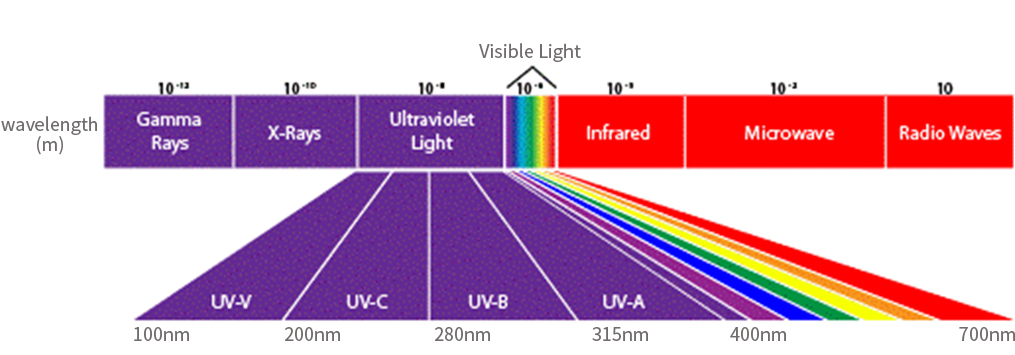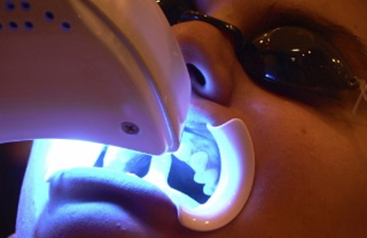TECHNOLOGY Introducing RAY-DOC's Technology
What is UV Ray?
Ultraviolet(UV) ray is an electromagnetic radiation with a wavelength shorter than that of visible light(400nm), but longer than X-rays(100nm). Sunlight is composed of gamma rays, X-rays, UV rays, visible rays, infrared rays, radio waves, etc., and they are distinguished by their specific wavelength. UV ray can be divided into three types and depending on their features, they are being widely used in the real life. Wavelength of the UV ray is classified as below.
electromagnetic spectrum

01 Classification of UV Rays

1. UV-A : 320~400nm (textile industry, archaeology, geological bedrock exploration, criminal investigation, counterfeit note detection, special lighting)
Also called as Black Light, it is used for indoor tanning or blue light illumination.
In addition, as it can be used as an energy source for activating photo-catalysts such as TiO2, it is recently being utilized for TiO2-based water and air purification.
UV-B : 280~320nm (cosmetic tanning, photo-chemical treatment, skin disease treatment, meteorological inspection equipment, medical-use)
Called as Domo ray, it synthesizes vitamin D or generates rash on the skin.
3. UV-C : 200~280nm [Sterilizations(water, air, swimming pool, air conditioner, etc.), deodorization]
Also called as germicidal ray, it is the ray of wavelength which absorbs and decomposes DNAs, proteins, and ozone well.
Therefore, it is recently being applied to UV/OZONE AOP process or used for ozone destruction and sterilization.
02 Application of UV Rays
UV ray has diverse functions such as ozone generation, sterilization, photo-chemical reaction, etc.
depending on its wavelength. Therefore, it is widely used in diverse areas through artificial light source which efficiently emits UV rays of effective wavelength.

- 255nm~280nm Sterilization, water purifier, air purifier
- 265nm~385nm Sterilization, deodorization

- 265nm~340nm Medical spectroscope, measurement instrument
- 310nm~340nm Phototherapy-psoriasis, mycosis, eczema, etc.
- 385,395,405nm Dental bleaching

- 310nm~395nm Counterfeit note detector
-
365nm~420nm
BlaBloodstain detector, FWA(Fluorescent Whitening Agent) Detector
ck Light (special lighting for night-club, stages, etc.)

- 240nm Forensic medical application : bloodstain detector
- 230nm~400nm Optical sensor, white light source
- 230nm~400nm Insect trap lamp
